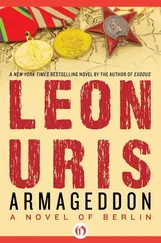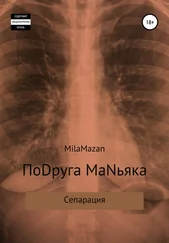The Jewish Fighters released the hostages. Boris Presser’s action ended any further use the Germans may have had for the Civil Authority.
Boris Presser and the rest who had served as message boys of the Germans were cast loose to spend the rest of their days despised and scorned by both their own people and the enemy.
The next morning posters were nailed over the front door of the abandoned Civil Authority building and posted on the walls throughout the ghetto.
ATTENTION!
AS OF TODAY, FEBRUARY 1, 1943, THE JEWISH CIVIL AUTHORITY IS DISBANDED. THIS GHETTO IS UNDER THE SOLE AND ABSOLUTE AUTHORITY OF JOINT JEWISH FORCES, ORDERS ARE TO BE OBEYED WITHOUT RESERVATION, SIGNED:
Atlas, Commander, Joint Jewish Forces
Jan, Executive Commander
Chapter Eight
Journal Entry
THE STAR OF DAVID flies over the Warsaw ghetto!
On February 2, 1943, the German Sixth Army surrendered at Stalingrad. We feel for the first time that Germany will lose the war. But how quickly will the flood-waters recede?
None of us are so foolish as to believe we will ever live to see a Jewish state in Palestine, but we have sounded the great trumpet of the return. A Jewish army controls the first autonomous piece of Jewish land in nearly two thousand years of our dispersal. Our “nation” is only a few square blocks and we know we shall not hold it long, but, as Tolek Alterman says, “This is living Zionism.” No matter what happens hereafter, for this moment we are a proud and free people.
The first “capital” of our “Jewish state” is Mila 18. I shall describe it. There are six main rooms. These are named for the six Polish extermination camps. Rooms: Belzec and Auschwitz hold a hundred and twenty fighters of two companies, one Bund and one Bathyran. This group is under Andrei’s personal command (in addition to his other duties).
Majdanek is the room which runs alongside the Kanal. Joint Forces had voted to keep this room (and several others around the ghetto) for the exclusive use of as many children as we can care for. We have rounded up forty. Nothing takes priority over the continuation of the Orphans and Self-Help tradition. As soon as we can place these children on the Aryan side we find others to bring into Majdanek. Although Rachael Bronski lives at the Franciskanska bunker (under Wolf’s command — I am very proud of him. To think such a soldier and leader is my son), she spends a great deal of time on the “children” operation. We keep a program of schooling and games. At night they can go out for exercise and fresh air. Pray God a few of them will survive. They are our harvest.
Treblinka holds food stores and is the “hospital” for the central command (two doctors, four nurses.) Sobibor keeps relatives of the Fighters and those few intellectuals we have been able to salvage. A smattering of writers, scientists, artists, theologists, historians, and teachers, who represent the last voice of our dying culture.
Chelmno is the arsenal and munitions works. Jules Schlosberg and a dozen workers manufacture and store fire bombs and grenades. (Actual weapons — i.e., pistols, rifles — are as scarce as ever.)
The second hallway is filled with small cells which are also named in “honor” of the lesser camps.
Stutthof is a closet holding the generator; Poniatow has the office and living quarters of Simon, Andrei, Tolek (operations and training officer), and Christopher de Monti. Stutthof holds two other cots for the radio and telephone operator on watch. Trawniki is a tiny cell for the exclusive quarters of Rabbi Solomon. He is the last rabbi left in the ghetto. Father Jakub tells me the Church is hiding Rabbi Nahum, probably to preserve as a historic relic. Dachau is shared by Moritz and Sheina Katz and Sylvia and me. (What privileged characters we are!)
Our number varies, but two hundred and twenty persons is the limit. We could not fit another in sideways. Thanks to the ingenious engineering by Moritz the Nasher’s departed gang, circulation through air vents is not too bad. We use the generator for lights, sparingly. Petrol is hard to get and is needed for fire bottles. Candles are used most of the time. But candles burn oxygen.
Mila 18 has six entrances: the sewer through the children’s room, a removable stove in the house above, and four tunnels in different directions running one hundred to three hundred feet away from Mila 18.
Expansion of our army is almost nil. Few left in the ghetto are fit to fight. Secondly, the arms shortage is as bad as ever. Our forces, combined with the three Revisionist groups at Nalewki 37 (Jabotinski, Chayal, and Trumpeldor), gives us a total of six hundred soldiers. Less than one in three has a firearm. The operations of the last week have seriously depleted our ammunition. We average less than ten rounds per weapon.
Our “quartermaster,” Moritz the Nasher, made his first major acquisition yesterday — several hundred pairs of boots. Boots, long time a symbol of German oppression, have become a symbol of our defiance. In Poland only strong men wear boots these days. Simon knew that the boots would be a great morale factor.
The Joint Jewish Forces work in three operations. One third: duty on the rooftops watch and in roving patrols. One third: constructing underground bunkers. One third: in training. The commanders (Eden, Androfski, and Rodel, sometimes Ben Horin) have set up a system of rooftop fighting based on ambush tactics. Each company has alternate bunkers, so that we continually shift our positions. The key is a continued building of a skilled runner system to keep communications intact. Although we have had simulated combat drills for several days, the main question is yet to be answered. Can this rabble army with few weapons maintain discipline under fire? Is there enough individual courage and ability to improvise among these unskilled soldiers to really tell upon the greatest military power the world has ever known?
The task of holding for a week seems impossible, but there is an unmistakable air of optimism. Morale is splendid. A new feeling of dignity among the surviving population is infectious.
We await the enemy. We know that this fight for freedom is entirely without hope. But does the fight for freedom ever really end? Andrei is right. All we have left is our honor and the historic duty to make our battle at this moment.
ALEXANDER BRANDEL
An ingenious phone circuit had been rigged from Mila 18 through the sewers directly to the other command posts at Wolf Brandel’s Franciskanska bunker and to Rodel beneath the Convert’s Church. A half dozen phones, mainly in German factories, were used on occasion for contact beyond the wall, along with the low-wattage radio transmitter.
Tolek Alterman dozed on his cot next to the phone in the commander’s office in Poniatow at Mila 18.
The phone rang. Tolek swung to a sitting position. He had let his hair grow long again since he stopped going to the Aryan side. He brushed it out of his eyes and fished for the receiver.
“Jerusalem,” he said. “Roberto speaking.”
“Hello, Roberto. This is Tolstoy in Beersheba.” Tolek recognized the bull-horn voice of Rodel. “Get me Atlas.”
Andrei, who was standing behind Tolek, walked quickly around the el of the corridor to Chelmno, where Simon fretted over the plans of the matzo ball-land mine being designed by Jules Schlosberg.
“Phone,” he said. “Rodel.”
“Hello, Beersheba. This is Atlas in Jerusalem.”
“Hello, Atlas. Tolstoy, Beersheba. My angels see the Rhine Maidens and their Swans at Stalingrad. One thousand bottles. It looks as if they are coming through the Red Sea.”
Читать дальше












